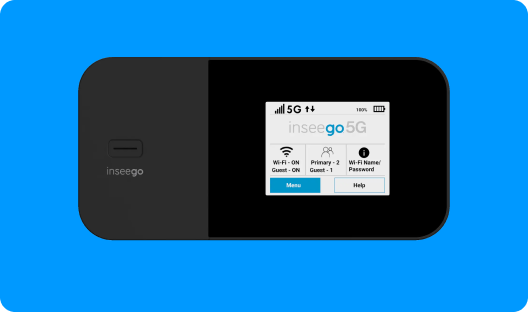Also in this category
View more in 5G5G
What is mmWave spectrum, and how do 5G networks use it?

If you’re new to the 5G world, you may be hearing terms like ‘mmWave frequencies’ and ‘sub-6 GHz’. What do they mean, and why do they matter?
Let’s start at the beginning.
In 1886, Heinrich Hertz pioneered the science of radio waves by demonstrating how electrical impulses could carry information over the air. And the rest, as they say, is history ... from Marconi’s telegraph to today’s new high-speed wireless communications networks.
Much like ocean waves, radio waves can take different forms, from long, slow swells that stretch out for miles to shorter, faster waves that come in rapid succession. The lower the frequency, the longer the wavelength. And the longer the wavelength, the further it can carry information.

Every kind of wireless system uses radio frequencies (RF). Radio stations use RF to broadcast music and other programming over a wide area. Citizen’s Band (CB) radio systems use RF to connect individuals who are tuned into a specific frequency. And cellular networks use the airwaves to provide voice, video and data communications for billions of people all over the planet.
These (and other) wireless communications systems are able to coexist across the RF spectrum because each type of network is restricted to specific frequency bands. Your favorite FM radio station operates somewhere on the spectrum between 88 and 108 megahertz (MHz), whereas your local AM station is between 535 and 1605 kilohertz (kHz) on the dial. If a station broadcasts at a frequency of 91.5 megahertz (millions of cycles per second) that means the transmitter is sending out information at a frequency of 91,500,000 cycles per second.
mmWave 5G provides greater capacity and faster speeds for more data traffic
While lower radio frequencies (below 6 GHz) are already heavily congested by a variety of wireless systems, mmWave bands are largely virgin territory that hasn’t been heavily used in the past.
5G technology introduces some innovative techniques that make this spectrum much more useful by combining many weaker signals, including reflected signals, into a stronger connection. That’s why the Federal Communications Commission (FCC) and other agencies have allocated huge sections of mmWave bands for 5G coverage. These big, fat mmWave "pipes" have the capacity to transmit far more data, faster than ever.
Think of it like this: A heavily used two-lane road can easily get overcrowded, slowing traffic speeds to a crawl. But a 12-lane freeway can carry much more traffic, at higher speeds. In fact, new mmWave 5G deployments have already demonstrated speeds over 2 Gbps (gigabits per second), with the capacity to double or even triple those speeds in the near future.
Higher capacity and throughput is essential in today’s connected society. According to one industry report, mobile network data traffic grew from 49 exabytes a month at the end of 2020 to over 66 exabytes a month in early 2021. With a huge rise in video traffic and Internet of Things (IoT) connections, that number is expected to reach 237 exabytes a month by 2026 — almost five times higher than it was two years ago.
mmWave 5G technology can also help reduce the latency, or “lag time,” between an action and a response. You may have experienced this kind of lag when you play streaming, multiplayer video games where you fire off a shot that gets delayed by 100 milliseconds or more. In this kind of application, where an instantaneous response is essential, even a few milliseconds can make a critical difference.
Low latency is also important for other applications such as Augmented Reality (AR), Virtual Reality (VR), new traffic control systems and the high-speed robotics used in manufacturing.
How does 5G coverage use mmWave frequencies?
While millimeter waves have a shorter range than low-band RF frequencies, that doesn’t mean that big 5G cell towers have to be erected everywhere. New mmWave 5G equipment is relatively small and designed to blend into the environment. Using a mesh of small cells and repeaters, 5G networks can cover an entire downtown area, including city streets, hospitals, businesses and apartment buildings.
To access these networks, new 5G indoor cellular routers and outdoor gateways are now being introduced by wireless operators in many countries, enabling their customers to tap into the power of 5G mmWave for a wide range of needs.
Thanks to next-generation 5G technology advances and innovative 5G coverage solutions, mmWave bands can now be put to work for a wide range of revolutionary applications.
Check out Inseego's 5G mmWave outdoor CPE specs or contact us to learn more:










